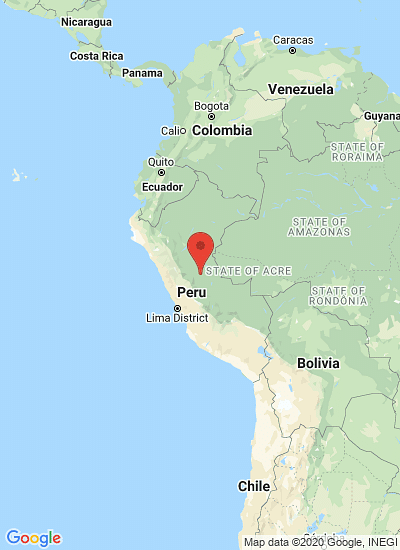Potatoes in all shapes, colors and presentations were a hit at Latin America’s biggest ‘foodie’ get together this year, and highlighted the fact that biodiversity can be delicious;good for science, good for the palate and good for the economy.
In the United Nations Year of Biodiversity, Peru’s answer to Germany’s Oktoberfest, the III International Gourmet Festival –Mistura - paid homage to the biodiversity of the humble potato by featuring native potatoes as a star product.
With more than 200 thousand visitors to the six day event, the festive occasion provided an ideal learning opportunity for the many Peruvians who, although their country is in the throws of a gastronomic boom, still only recognize a handful of the more than 4000 varieties of native potato that exist in the Andes.
Peruvian chef Gaston Acurio – mastermind behind the annual festival, and head of a gastronomic empire including more than 30 restaurants around the world, is recognized in his home country as something of a champion of the unsung heroes who are the guardians of that biodiversity.
"It’s important for consumers to understand that every time you eat a Peruvian causa, behind that dish is a hard working small potato producer”, says Acurio, one of a ‘new wave’ of chefs actively sourcing local products and embracing the social and economic role that food plays.
The International Potato Center (CIP)’s regional initiative PapaAndina, working closely with its public and private partners, has played a major role in making sure that small scale Andean farmers are benefiting from the potato’s new found star status in Peru.
The ‘foodie factor’, along with growing interest from the country’s major supermarket chains, represents an opportunity for small farmers to access high-value markets, and has fueled a rapidly expanding internal market. In 2010 the native potato market moved about five thousand metric tons of potato in Peru, up from a mere 100 tons in 2005.
Together with research organizations and NGO’s, which are working directly with 6,000 farmers and their families throughout Peru, Ecuador and Bolivia, PapaAndina develops improved production technologies, and new products and marketing strategies. Its advocacy activities have also placed potato firmly on the political agenda.
This means for example that, in Peru small farmers are more able now to respond to the high quality standards demanded by multinational companies for chips production. The creation of a National Potato Day has helped raise public awareness, and technical norms have been adopted to ensure quality control for the freeze-dried potato products, chuño and tunta.
The creation of a business model incorporating Corporate Social Responsibility (CSR) also ensures that farmers receive a fair price for their product.
Such a model was instrumental in setting a new benchmark price for native potatoes, negotiated between Pepsico and farmers in a pilot partnership established in 2007 representing a 100% increase over prices obtained in local markets, with an average profitability of 30% for farmers. More than 200 farming families have benefitted from a secure demand and price for their production over the last three years.
Potatoes are set to focus once again on the international agenda, with this week’s conference of the parties to the Convention on Biological Diversity (COP 10). The meeting due to be held from 18-29 October in Nagoya, Japan will bring together officials from 192 countries and the European Union to address the issue of biodiversity loss.
With reports indicating the failure to meet targets set eight years ago, the meeting is expected to highlight once again the urgency with which governments need to adopt policies for the conservation and sustainable use of biodiversity.
Native potatoes put biodiversity on a plate and on the agenda
Like to receive news like this by email? Join and Subscribe!
Get the latest potato industry news straight to your WhatsApp. Join the PotatoPro WhatsApp Community!
精选企业
Sponsored Content
Sponsored Content
Sponsored Content
Sponsored Content







